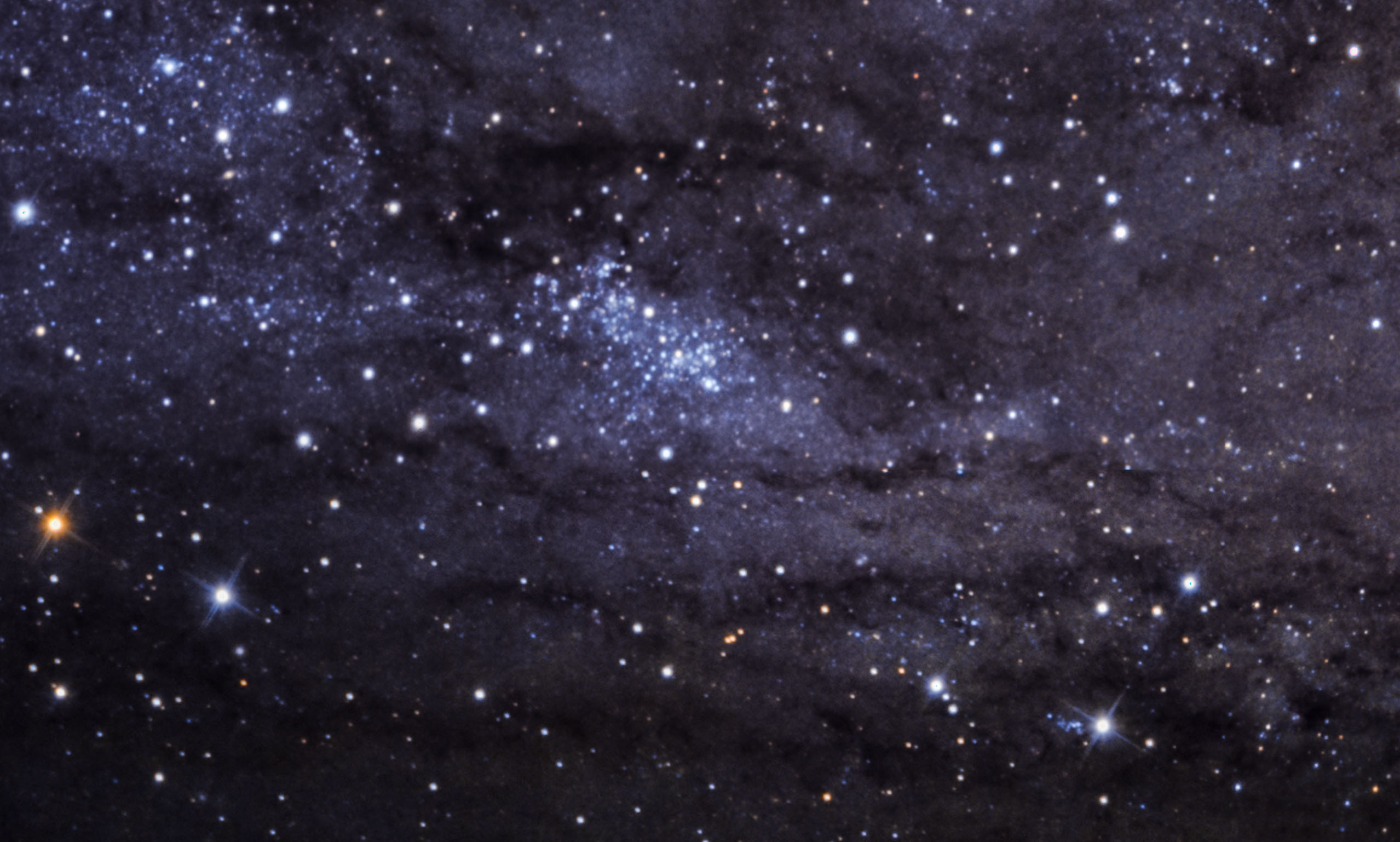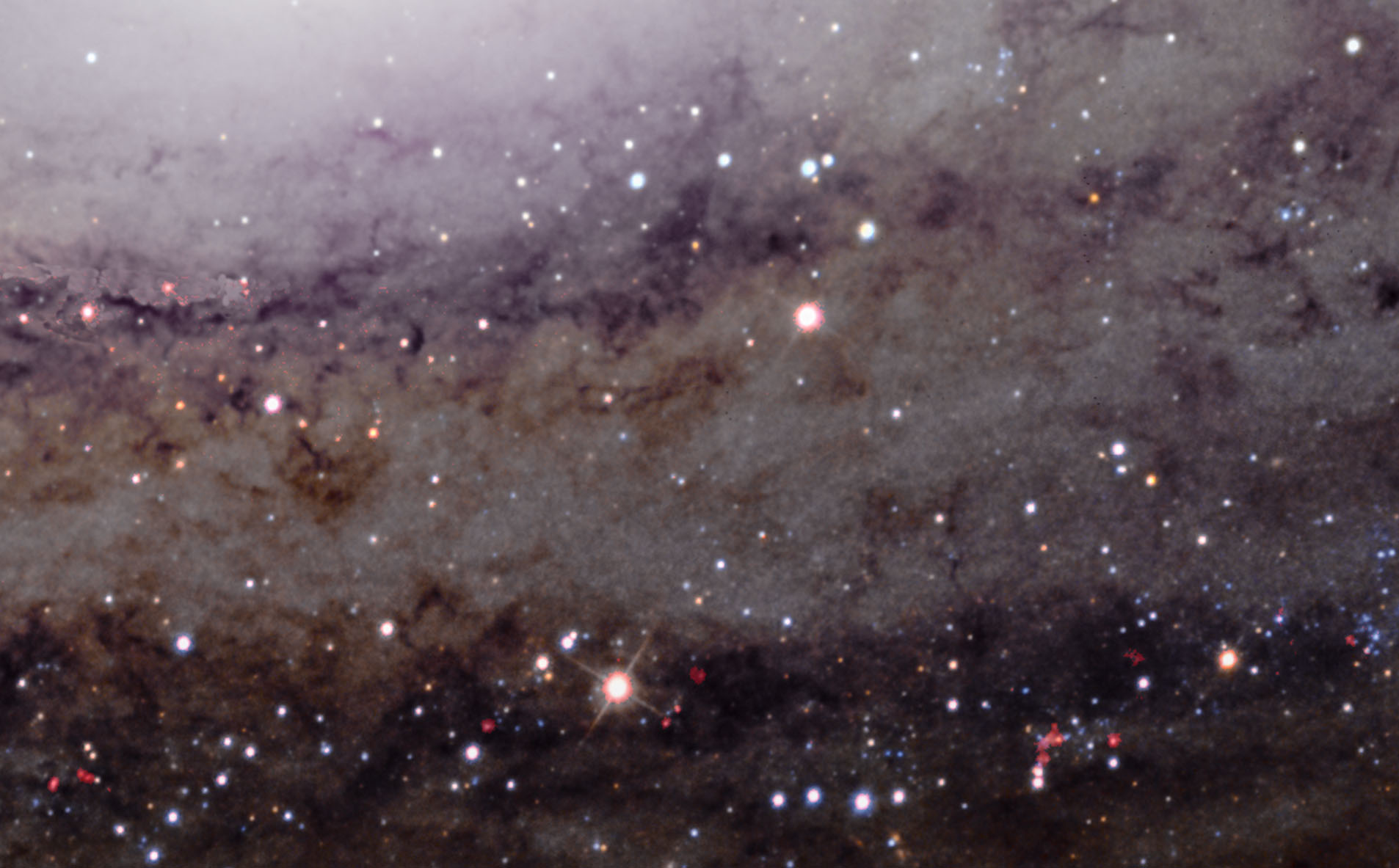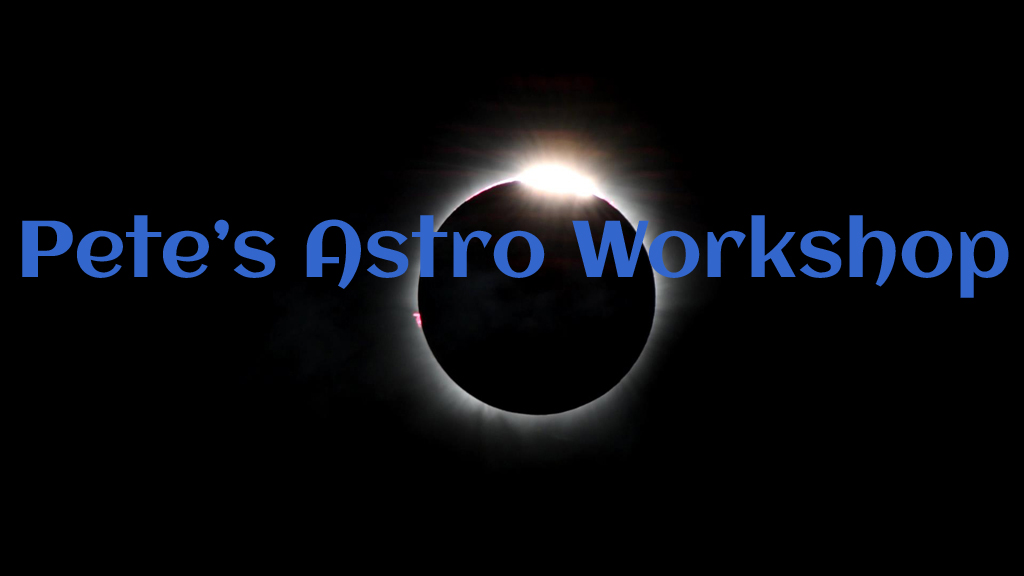M31 – The Great Andromeda Galaxy

For most people interested in astronomy, M31 needs no introduction. It is one of the nearest galaxies to our own, it is the largest member of the Local Group and it is the most distant object visible to the unaided eye. Andromeda is larger than our Milky Way, being about 200,000 light years across, and is 2.5 million light years away. It is estimated to contain a trillion (a million million) stars, about twice as many as the Milky Way, yet its mass is thought to be about the same as that of our galaxy. At the core of M31 is a supermassive black hole with a mass around 100 million times that of the Sun. (The black hole at the core of the Milky Way is estimated at 4 million suns).
This image is a mosaic of 8 panels taken through the 14-inch telescope at my remote site in Spain. Since the galaxy spans over 3° on the sky (or about 6 full moon widths) and the telescope’s field of view is 49 arc-minutes, a mosaic is the only way to image the entire galaxy with this setup.
Each panel was exposed through red, green, blue, luminosity (clear) and hydrogen-alpha filters: 4 hours each for the broadband filters and at least 6 hours for the H-α. This adds up to over 180 hours’ total exposure time. Due to equipment failures and other technical issues, the data was acquired over three autumn observing seasons (2019-2021).
However, although the image acquisition phase was not straightforward, the processing proved even more challenging. The issues included uneven background illumination (gradients) which varied with each filter, making it difficult to match the backgrounds (and this can lead to unnatural colour effects). Fortunately PixInsight has some excellent tools for both planning and assembling mosaics, and for dealing with gradients.
The image, in which north is to the right, shows the spiral arms with their predominantly blue younger stars and dark dust lanes, and the satellite galaxies M110 (NGC 205) below and M32 (NGC 221) above (M31 is NGC 224). In addition the H-α narrowband filter has brought out a number of H-II regions in the spiral arms in which ionized hydrogen glows with its deep red colour.
One of the most important stars in the development of cosmology is designated M31-V1, the first Cepheid variable* found in another galaxy. Identified by Edwin Hubble in 1923, its periodic variability enabled the distance to M31 to be determined for the first time, establishing it as a galaxy in its own right, well beyond the boundaries of the Milky Way.
M31-V1, whose magnitude varies between 18.5 and 19.8, is visible in this image and is identified in the following enlarged panel.
* Cepheid variables are typically more massive and a lot brighter than the Sun. They pulsate regularly due to a cyclic process that causes the star to expand and contract, but the key thing is that their pulsation period depends on their intrinsic luminosity. Measuring their periods enables their luminosity, and hence their distance, to be calculated.

M31-V1, which varies in magnitude between 18.5 and 19.8, is identified in the above image.
As the web page does not permit viewing the image at full resolution (the original is over 12,000 pixels wide by 6,000 deep) two further areas of the image are shown below at higher resolution below.

Detail of enormous star cluster NGC 206 in Andromeda’s spiral arms
Appearing at centre-left of the main image, this cluster is so large that it has its own NGC number despite being inside another galaxy.
It contains thousands of very hot, bright young stars (spectral classes O and B) and is about 4,000 light years across.

Detail of dust lanes and H-II regions in the inner spiral arms.
H-II regions glow with the deep red light of the H-α spectral line at a wavelength of 696.5 nm. These atoms have been excited by radiation from hot young stars and are a clue that stars are forming in these locations.
Technical details:
Planewave CDK-14 corrected Dall-Kirkham reflector, FLI Proline P9000 cooled CCD camera and filter wheel with Astrodon LRGB and 3nm H-α filters. Total exposure times were 32 hours in each of Luminosity, Red, Green and Blue and 50 hours H-α. Processed in PixInsight and Photoshop.
I am particularly indebted to John Murphy and the helpful support he gave me on his PixInsight scripts Photometric Mosaic and Normalize Scale Gradient, without which this project could not have been finished.


0 Comments